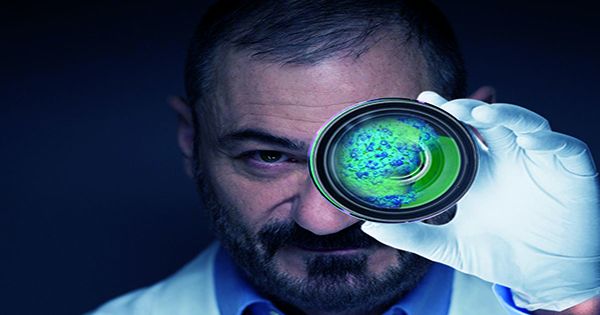Researchers have developed a microscopy technique that is 6.6 times more sensitive than other current techniques of its kind, as published in a study published in Optics: Science and Applications. The new method can be powerful enough to observe even small things like viruses.
Takuro Ideguchi, the study’s first author, said in a statement, “Small signals can be detected from nanoscale particles, such as viruses or particles moving in and out of a cell, which allows for simultaneous monitoring of their behavior and cell state.” The new technique is called Adaptive Dynamic Range Shift Quantitative Phase Imaging (ADRIFT-QPI) and is an upgrade to the existing quantitative phase imaging method. Quantitative phase imaging is already powerful enough to clearly observe the roughness of glass slides and is commonly used to observe biological processes. It sends a flat sheet of light to the pulse towards the sample and then works by measuring the phase shift, which is how different the light is when it is illuminated on the other side.
Professor Ideguchi said that “to see more detail using the same image sensor, we must expand the dynamic range so that we can detect changes in small phases of light,” and the Tokyo University team saw a way to achieve this.
ADRIFT-QPI improves sensitivity using a bi-exposure method. The first exposure is to insert the sample with a flat sheet of light as usual. Computer analysis then designs a “sculpture of light” based on the first pulse lesson. This sculpted wavefront vibrates in the sample at a higher light intensity than the first. This second pulse reveals the subtraction details that will sink into the first pulse. A program then sews these two lessons together, creating the final image. This second pulse reveals the subtraction details that will sink into the first pulse. A program then sews these two lessons together, creating the final image.
Professor Ideguchi further explained that “our ADRIFIT-QPI method does not require any special lasers, special microscopes or image sensors; we can use living cells, we do not need any stains or refractions and there is very little chance of phototoxicity.” The luminous intensity of ADRIFT-QPI is lower than that of other paintings used in live cells. It reduces cell damage through the light which is known as phototoxicity. “The luminous intensity of ADRIFT-QPI is less than that used in other images used in live cells and potentially affects the molecules attached to them. There is no need for these pigments, as well as no need to buy more specialized equipment, which can save future researchers time, effort, and money. Combined with impressive imaging capabilities, it turned ADRIFT-QPI into a highly promising microscopy method.















